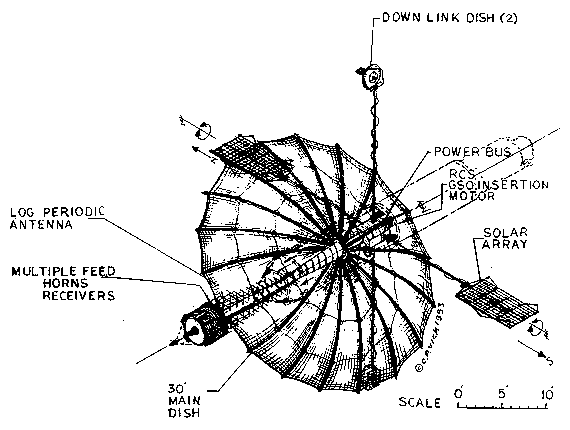Canyon

Canyon SIGINT satellite. Diagram © C. P. Vick, 1993.
Canyon was the first generation of large American SIGINT (signals intelligence) satellites and the first combined ELINT/COMINT satellites. The cover for them was that they were prototype early warning satellites, but they were actually intended to monitor the radio communications of command posts and the staffs of high-echelon commands in the Soviet armed forces, especially the Strategic Rocket Forces. Canyons (DoD numerical designation 827), were built by TRW (prime contractor), operated during the 1970s from quasistationary orbit, and replaced a series of earlier, low Earth orbiting heavy ferrets. Of seven launches, between 6 August 1968 and 23 May 1977, six were successful. The first four Canyon satellites kept the Agena upper stage booster attached (the fourth one failed to orbit). With the next three, the Agena separated from the satellite. The Canyons proved the quasi-stationary orbit concept, which was used by subsequent SIGINT birds. The Canyons were superceded by Rhyolite/Aquacade and Chalet/Vortex.
| launch vehicle | Atlas Agena D |
| site | Cape Canaveral |
| orbit | quasi-GSO, incl. 9° |
| size | 8.5 (length) × 9.1 (diam.) m |
| mass | 270 kg |


